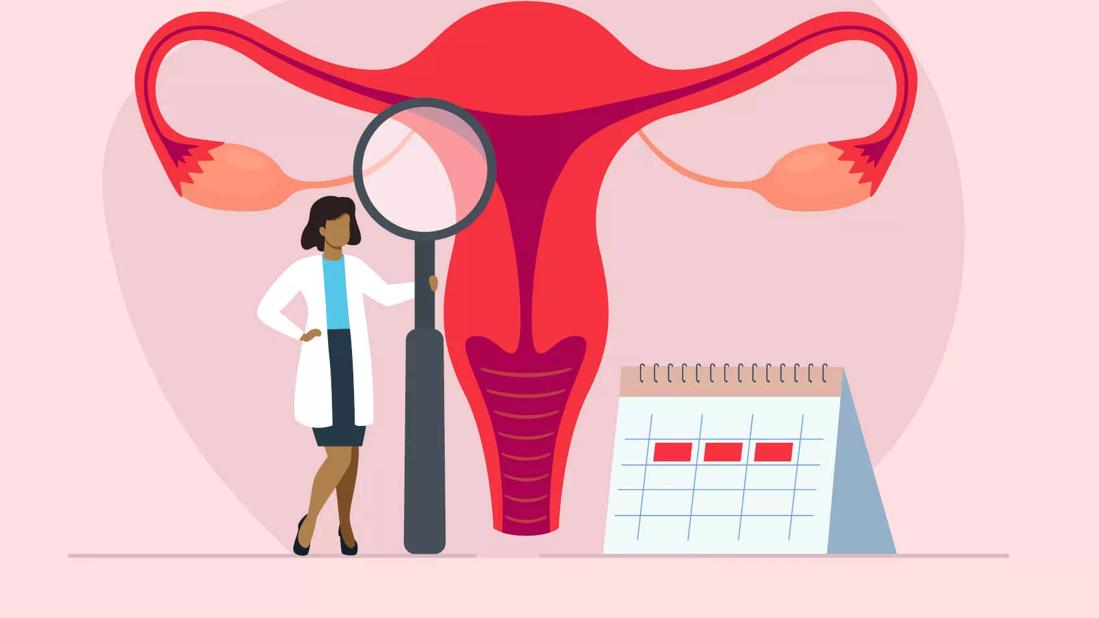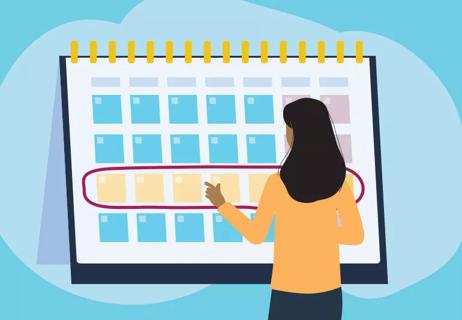Eating and exercising according to your cycle can reduce PMS and period symptoms

You know all too well how low you feel before and during your period. Have you also noticed a burst of energy mid-cycle?
Advertisement
Cleveland Clinic is a non-profit academic medical center. Advertising on our site helps support our mission. We do not endorse non-Cleveland Clinic products or services. Policy
During your menstrual cycle, hormone changes can cause swings in your mood, energy, appetite, creativity and social engagement. Cycle syncing is a way to adapt your lifestyle to these changes to achieve better balance and feel your best.
“The idea that you can and should listen to your body is revolutionary,” says psychologist Susan Albers, PsyD. “Cycle syncing gives you permission to take care of yourself in a different way.”
Cycle syncing is adjusting your routines around the phases of your menstrual cycle. It recognizes the rise and fall of your sex hormones that can leave you feeling tired, energetic or somewhere in between.
The concept of cycle syncing came from functional nutritionist Alisa Vitti’s 2014 book, WomanCode. These days, it’s a popular topic on social media. Dr. Albers notes that the cycle syncing program hasn’t been researched in a clinical setting. That said, there’s a lot of research supporting differences in mood and activity levels during each phase of the menstrual cycle.
People often focus on syncing diet and exercise to their cycle. But you can extend the practice to other aspects of your life, such as work and relationships. For example, plan an evening out with friends during the more energetic phase of your cycle, as you may just want to stay home and binge watch TV right before or during your period.
Advertisement
Cycle syncing can put you in tune with the monthly changes in your hormones, says Dr. Albers. This understanding can be especially helpful if you’re trying to become pregnant and need to pinpoint ovulation.
Cycle syncing may also help balance hormone levels in people with polycystic ovary syndrome (PCOS).
Tailoring your diet and fitness routine to your menstrual cycle may also:
Hormonal birth control uses synthetic hormones to stop ovulation. Because these hormones override your natural hormones, cycle syncing doesn’t really apply if you’re on birth control.
“However, it’s still important to pay attention to your body even if you’re on birth control,” says Dr. Albers. “You may still have ups and downs in your mood, energy levels and appetite. Syncing your diet and exercise to these changes can be helpful.”
The first step is learning about your menstrual cycle, a biological cycle called an infradian rhythm. Many people think of their cycle as being on or off their period, but it’s more complex than that.
The typical menstrual cycle is 28 days long and has four phases:
Your cycle is probably not exactly 28 days. Because most people vary, Dr. Albers recommends tracking your cycle using a calendar or app. Pay attention to the signals your body sends you, such as your:
“It may take several months to figure out your cycle,” she says. “Once you know your phase pattern, you can adjust your diet and exercise accordingly.”
Your body’s nutritional needs change across your cycle. Specific foods and nutrients can help support you during these changes.
Eating the right foods at the right time can be a challenge. Dr. Albers recommends creating meal plans and shopping lists for each phase. Also, consider shopping ahead — especially for your menstrual phase, when you may not feel like going to the grocery store.
As you read, keep in mind that these suggestions aren’t tailored to any one individual. It’s important to know yourself and what foods your body responds to.
Nutrition for each phase includes:
Cramping, fatigue and irritability are common period symptoms. You may turn to sweets, pizza and chips for comfort. But eating these foods during your period can throw your hormones out of balance and rob you of important nutrients.
Advertisement
Foods to eat during the menstrual phase include:
Choose foods to support your increased energy levels. Lean proteins and complex carbohydrates, such as whole wheat, brown rice and quinoa, will fuel higher-intensity workouts.
As estrogen levels rise, eat foods to help your body balance estrogen, including:
With estrogen surging, your liver is working hard to break down the excess estrogen. Continue eating estrogen-balancing foods.
Eating an overall healthy diet can also help give you the strength and stamina you need during this high-energy phase.
Advertisement
The luteal phase can bring on PMS, hunger and cravings. Complex carbohydrates and high-fiber foods, such as cruciferous vegetables, leafy greens and sweet potatoes, will help curb hunger.
If you’re craving a sweet or salty snack, dark chocolate, fruit, nuts and seeds are good substitutes. Pumpkin seeds, which contain high amounts of magnesium, can also help reduce fluid retention.
And remember to stay hydrated. Drinking plenty of water can reduce bloating, brain fog and PMS.
Instead of doing the same workouts week after week, try listening to your body and understanding how it needs to move. Match the intensity of your workouts to your changing energy levels:
You have less energy, so this is the time for low-intensity activities, such as walking, stretching or Pilates. “You may not feel like exercising at all, and that’s OK,” states Dr. Albers.
As your energy levels increase, start adding in cardio-based workouts. Running, swimming and group fitness classes are great options to get your heart rate up.
Take advantage of your peak energy levels with high-intensity workouts, such as:
Medium-intensity cardio and strength training are best during this phase. Take things slower as your period approaches.
Advertisement
You don’t need supplements to sync your cycle.
“You should get the nutrients you need through your diet,” says Dr. Albers. “Supplements are not always as safe as you might think. It’s important to talk to your healthcare provider first.”
Being mindful of your body and its patterns can be a game changer. Cycle syncing is one way to become aware of your needs, and nurture and care for your body.
Learn more about our editorial process.
Advertisement

Foods with iron, antioxidants and fiber can help you feel your best

If you wash regularly and change your underwear as needed, this can be a safe (and liberating) alternative to pads and tampons

The research isn’t clear, but it’s safe to try this essential mineral for relief

Although it can be alarming, it’s normal to experience blood clots during menstruation

Reasons for spotting can include menopause, uterine fibroids, PCOS and birth control

Hormonal changes are the likely culprits behind the aches and fatigue before your period

Typically, you can keep your appointment, let your gynecologist know and let your worries go

Stress, extreme diet and exercise, PCOS and, of course, pregnancy could be responsible

If you’re feeling short of breath, sleep can be tough — propping yourself up or sleeping on your side may help

If you fear the unknown or find yourself needing reassurance often, you may identify with this attachment style

If you’re looking to boost your gut health, it’s better to get fiber from whole foods